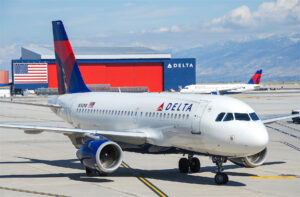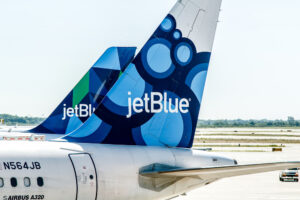EHD swabs and "false" detections
#31
FlyerTalk Evangelist
Join Date: Mar 2008
Location: DFW
Posts: 28,232
I understand this and think that this is a possible solution, but it is not the current policy. I would welcome this type of procedure if it is deemed feasible to implement at the checkpoint. We have standard decon protocols that go into effect when an alarm is triggered, perhaps the next step should be as you suggest.
I always treat every passenger and bystander and employee in my sphere of influence with professionalism and courtesy. That is what ALL TSOs are supposed to do without fail. The fact that some of the workforce does not "get it" is something I work to correct every time I see it happen. Policy is always up for debate, but TSOs should always be expected to conduct themsleves professionally and courteously - period.
The attitude that I display is simply an understanding that cross contamination is going to occur from time to time. TSA has and follows (at least in my experience - even at LAX when I worked there, and LAX is a zoo!) the SOP and manufacturers recommendations for decon, maintenance and cleaning procedures.
I always treat every passenger and bystander and employee in my sphere of influence with professionalism and courtesy. That is what ALL TSOs are supposed to do without fail. The fact that some of the workforce does not "get it" is something I work to correct every time I see it happen. Policy is always up for debate, but TSOs should always be expected to conduct themsleves professionally and courteously - period.
The attitude that I display is simply an understanding that cross contamination is going to occur from time to time. TSA has and follows (at least in my experience - even at LAX when I worked there, and LAX is a zoo!) the SOP and manufacturers recommendations for decon, maintenance and cleaning procedures.
Every moment TSA spends on these tests takes away from doing real security.
#32
Suspended
Join Date: Dec 2010
Posts: 3,728
The devices are not fatally flawed - the idiots attempting to use them are fatally flawed.
#33
Join Date: Dec 2010
Posts: 2,425
I always treat every passenger and bystander and employee in my sphere of influence with professionalism and courtesy. That is what ALL TSOs are supposed to do without fail. The fact that some of the workforce does not "get it" is something I work to correct every time I see it happen. Policy is always up for debate, but TSOs should always be expected to conduct themsleves professionally and courteously - period.
Saying you'll violate people professionally and courteously is pure nonsense. The acts are offensive and cannot be made better by you being 'nice'.
People are on edge at checkpoints not because clerks are or are not jerks. They are on edge because for no reason or for stupid reasons beyond their control you clerks will get your hands onto their body including private parts.
#34
Join Date: Apr 2009
Posts: 2,195
The bottle may say on it that it contains a product, but there is no way to be sure that those contents have not been replaced with something dangerous without testing it. Its something ETD systems are particularly good at.
#35
Suspended
Join Date: Dec 2010
Posts: 3,728
There's also the distinct probability that the jerk will demand the passenger go back to the broom closet for an intimate groping based on an "alarm" for their hand lotion.
#36
Join Date: Dec 2007
Programs: DL, WN, US, Avis, AA
Posts: 662
Yes, yes, yes, yes. It's despicable that the TSA automatically assumes that we are the cause of false positive results instead of testing its procedures first. Once again, guilty until proven innocent even when TSA commits errors.... try that approach in a court of law with prosecutorial or law enforcement errors.
#37
Join Date: Oct 2010
Posts: 516
I'd be flabbergasted if the ratio is better than 1000 to 1.
But please respond with a ratio, and not another assertion.
#38
Join Date: Dec 2007
Programs: DL, WN, US, Avis, AA
Posts: 662
I always treat every passenger and bystander and employee in my sphere of influence with professionalism and courtesy. That is what ALL TSOs are supposed to do without fail. The fact that some of the workforce does not "get it" is something I work to correct every time I see it happen. Policy is always up for debate, but TSOs should always be expected to conduct themsleves professionally and courteously - period.
I think it is important for every TSA employee, especially the ones who seem to be professional and level-headed, to understand one very important point: It doesn't matter how polite your are, how sincere your smile, whether you address me as "sir", or anything else. In the final analysis, you will be sticking your hand (at least your fingers) down my pants and you will be rubbing my genitals without my consent. It is impossible to perform such an act "with professionalism and courtesy." Any claims to the contrary are hollow.
I'm sure you are well meaning and I take your statement that you treat passengers with courtesy and respect at face value. I fear that you have lost sight of the discourtesy and lack of respect towards the public that is an inherent component of your job.
#39
FlyerTalk Evangelist
Join Date: Mar 2008
Location: DFW
Posts: 28,232
This isn't about someone changing contents of a container but the inability to not detect harmless items. Each false positive takes time away from doing the rest of the TSA Security Theater Act.
#40
Join Date: Apr 2009
Posts: 2,195
Care to put some meat on your bald-faced assertion that ETD systems are particularly good at identifying "something dangerous"? In the past month, how many swabs were positive, and how many of the positive swabs led to the discovery of "something dangerous"?
I'd be flabbergasted if the ratio is better than 1000 to 1.
But please respond with a ratio, and not another assertion.
I'd be flabbergasted if the ratio is better than 1000 to 1.
But please respond with a ratio, and not another assertion.
The devices detect chemicals, usually in the double digit parts per million. Many household chemicals have their usual run of the mill uses, and those same chemicals can be used for something far more destructive. The presence of these chemicals on an individual’s person or property does not indicate nefarious intent, it only indicates a need for a closer inspection (as we have discussed here many many times).
If our ETD detects “nitroamine”, that does not mean that the individual has built a bomb, it only means that the chemical is present on his person or property. Such a chemical has many legitimate purposes around the globe, but can also be used to build an explosive device. A more intense inspection is warranted. The same can be said for many chemicals, including hydrogen peroxide. I have some in my medical kit at my home, many people do, and its presence is not really unexpected in someone’s personal property. But the only way to determine its concentration is in a lab like facility, which cannot be deployed to every commercial airport in the United States. Its concentration is a major factor when considering its ability to be a component in a bomb.
So, in the end, an ETD alarm is rarely a false negative. It’s an indication that further inspection is warranted. Get it now?
Ron, the problem is that the TSA ETD machines alarm on harmless normal everyday things. Hand lotion, contact lens solution, my camera bag, to mention a few things. Those are all false positives and make the TSA ETD machines worthless.
This isn't about someone changing contents of a container but the inability to not detect harmless items. Each false positive takes time away from doing the rest of the TSA Security Theater Act.
This isn't about someone changing contents of a container but the inability to not detect harmless items. Each false positive takes time away from doing the rest of the TSA Security Theater Act.
There are many chemicals in nature that you cannot see, does that make them exist any less?
#41
Suspended
Join Date: Dec 2010
Posts: 3,728
Every false positive gives them another opportunity to do their meaningless dance and perform their play-acting to the sheep about how they're the only thing keeping planes from being blown out of the sky.
#42
Join Date: Oct 2010
Posts: 516
Originally you said:
(my emphasis)
I asked you to provide data to back up the assertion that ETD systems are particularly good at identifying "something dangerous".
You did not provide data, instead, you changed your tune significantly and now say:
I'm glad you recognized your mistake.
I asked you to provide data to back up the assertion that ETD systems are particularly good at identifying "something dangerous".
You did not provide data, instead, you changed your tune significantly and now say:
I'm glad you recognized your mistake.
Last edited by OldGoat; Sep 4, 2012 at 4:13 pm Reason: Added original quote.
#43
FlyerTalk Evangelist
Join Date: Mar 2008
Location: DFW
Posts: 28,232
You first.
The devices detect chemicals, usually in the double digit parts per million. Many household chemicals have their usual run of the mill uses, and those same chemicals can be used for something far more destructive. The presence of these chemicals on an individual’s person or property does not indicate nefarious intent, it only indicates a need for a closer inspection (as we have discussed here many many times).
If our ETD detects “nitroamine”, that does not mean that the individual has built a bomb, it only means that the chemical is present on his person or property. Such a chemical has many legitimate purposes around the globe, but can also be used to build an explosive device. A more intense inspection is warranted. The same can be said for many chemicals, including hydrogen peroxide. I have some in my medical kit at my home, many people do, and its presence is not really unexpected in someone’s personal property. But the only way to determine its concentration is in a lab like facility, which cannot be deployed to every commercial airport in the United States. Its concentration is a major factor when considering its ability to be a component in a bomb.
So, in the end, an ETD alarm is rarely a false negative. It’s an indication that further inspection is warranted. Get it now?
Only if you narrow the definition of "false positive" down to its most basic form. Only the obtuse do that, and then only to try and make a point where there is none.
There are many chemicals in nature that you cannot see, does that make them exist any less?
The devices detect chemicals, usually in the double digit parts per million. Many household chemicals have their usual run of the mill uses, and those same chemicals can be used for something far more destructive. The presence of these chemicals on an individual’s person or property does not indicate nefarious intent, it only indicates a need for a closer inspection (as we have discussed here many many times).
If our ETD detects “nitroamine”, that does not mean that the individual has built a bomb, it only means that the chemical is present on his person or property. Such a chemical has many legitimate purposes around the globe, but can also be used to build an explosive device. A more intense inspection is warranted. The same can be said for many chemicals, including hydrogen peroxide. I have some in my medical kit at my home, many people do, and its presence is not really unexpected in someone’s personal property. But the only way to determine its concentration is in a lab like facility, which cannot be deployed to every commercial airport in the United States. Its concentration is a major factor when considering its ability to be a component in a bomb.
So, in the end, an ETD alarm is rarely a false negative. It’s an indication that further inspection is warranted. Get it now?
Only if you narrow the definition of "false positive" down to its most basic form. Only the obtuse do that, and then only to try and make a point where there is none.
There are many chemicals in nature that you cannot see, does that make them exist any less?
And you call me obtuse.
#44
Join Date: Feb 2008
Location: Nashville, TN
Programs: WN Nothing and spending the half million points from too many flights, Hilton Diamond
Posts: 8,043
It is really sad that you can't admit that the TSA ETD machines often alert on items that are not dangerous. By any measure that is a false positive. Even worse is TSA inflicting these terroristic screenings on people who have done absolutely nothing to merit an item by item inspection of their belongings.
And you call me obtuse.
And you call me obtuse.
The problem with binary test results and the TSA is that the failure of the test is cause for suspicion of the person, not cause for determination of the severity and source of the anomaly.
In industry, the failure of a binary process test puts in motion a range of qualifying tests to determine the severity of the problem, the source of the problem and the correction of the problem.
The TSA has no such tools at their disposal. Therefore, the result of the binary test is to assume the most severe causes and eliminate by inspection each of the possibilities. This would be considered a ridiculous methodology in industrial testing as the cost and time for resolution may be disproportionate to the severity of the problem.
Furthermore, applying the elimination by inspection process to humans just trying to get on a plane, becomes a humiliating and often a very uncomfortable process that almost universally ends up showing that no correctable problem exists. The TSA does not care. They have to resolve the binary alarm with the only tools at their disposal, inspection.
When your only tool is a hammer, every problem begins to look like a nail.
#45
FlyerTalk Evangelist
Join Date: Mar 2008
Location: DFW
Posts: 28,232
Binary test results, such as go/no go gauges, are quite common in industry and serve a useful purpose. They alert the machine operator that an operation is out of tolerance. They do not say how much out of tolerance, or the cause of the intolerance, but they are accepted tools for process inspection.
The problem with binary test results and the TSA is that the failure of the test is cause for suspicion of the person, not cause for determination of the severity and source of the anomaly.
In industry, the failure of a binary process test puts in motion a range of qualifying tests to determine the severity of the problem, the source of the problem and the correction of the problem.
The TSA has no such tools at their disposal. Therefore, the result of the binary test is to assume the most severe causes and eliminate by inspection each of the possibilities. This would be considered a ridiculous methodology in industrial testing as the cost and time for resolution may be disproportionate to the severity of the problem.
Furthermore, applying the elimination by inspection process to humans just trying to get on a plane, becomes a humiliating and often a very uncomfortable process that almost universally ends up showing that no correctable problem exists. The TSA does not care. They have to resolve the binary alarm with the only tools at their disposal, inspection.
When your only tool is a hammer, every problem begins to look like a nail.
The problem with binary test results and the TSA is that the failure of the test is cause for suspicion of the person, not cause for determination of the severity and source of the anomaly.
In industry, the failure of a binary process test puts in motion a range of qualifying tests to determine the severity of the problem, the source of the problem and the correction of the problem.
The TSA has no such tools at their disposal. Therefore, the result of the binary test is to assume the most severe causes and eliminate by inspection each of the possibilities. This would be considered a ridiculous methodology in industrial testing as the cost and time for resolution may be disproportionate to the severity of the problem.
Furthermore, applying the elimination by inspection process to humans just trying to get on a plane, becomes a humiliating and often a very uncomfortable process that almost universally ends up showing that no correctable problem exists. The TSA does not care. They have to resolve the binary alarm with the only tools at their disposal, inspection.
When your only tool is a hammer, every problem begins to look like a nail.





















